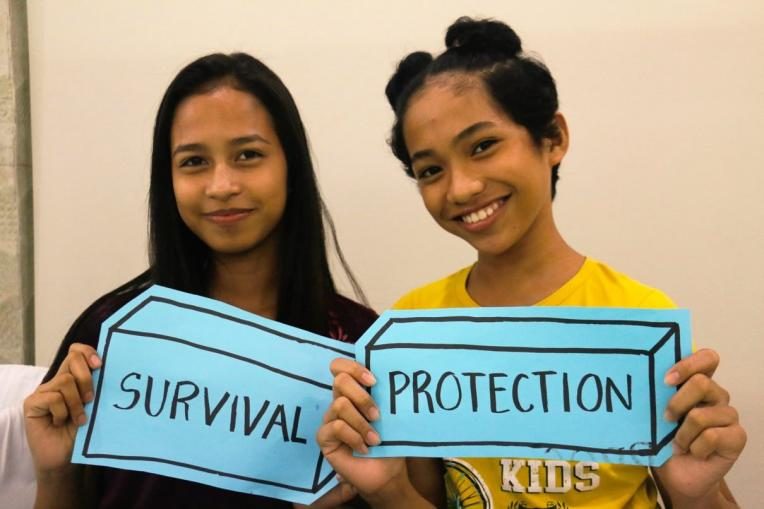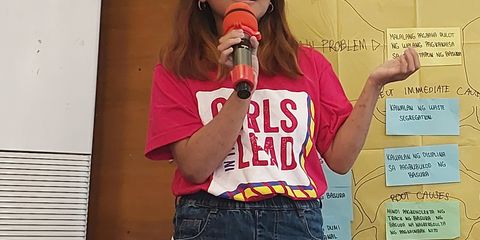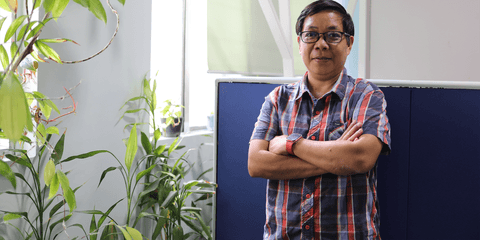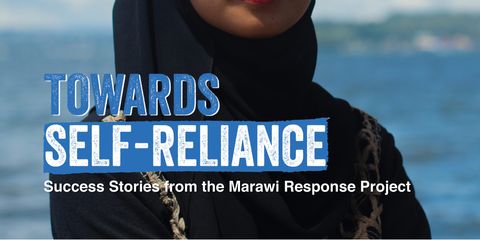JULIEANNE TABILOG Content and Digital Consultant
11 JUNE 2021
On June 3 and 4, 2021, Plan International and Balay Mindanaw Foundation held the culminating activity of the CAAT Project called “Building Communities, Ending Trafficking: A National Learning Conference”. Gathering over 300 representatives from the communities, government, schools, other child rights organizations, and children and young people, the conference celebrated the life-saving outcomes of the CAAT Project and even provided a collaborative avenue for attendees to work together and craft strategies to sustain the different initiatives against trafficking.

Trafficking-in-Persons (TIP) has long been a difficult problem to solve. It is a crime that operates in plain sight as well as behind closed doors. It endangers not only adults but also countless children who are unknowingly trafficked through online platforms and arrangements.
When the COVID-19 pandemic hit, the reported incidence of TIP and Online Sexual Abuse and Exploitation of Children (OSAEC) grew to an alarming rate, linked to the worsening financial crisis being experienced by many households and the prolonged issuance of stay-at-home orders for potential victims, local traffickers, and sex offenders. According to the International Justice Mission Philippines, the Philippine Inter-Agency Council Against Trafficking cited a 300% increase in reports of circulating Child Sexual Exploitation Materials from 2019 to 2020. It goes without saying that the issue of trafficking needed urgent attention and action.
It is to this call for action that Plan International and Balay Mindanaw Foundation responded through the Collaborative Action Against Trafficking (CAAT) Project that started in 2017. Three years since its implementation, the CAAT Project was able to capacitate 27 communities and reach over 17,000 people—from victim-survivors, parents, children, and young people, to barangay officials, service providers, street cleaners, porters, public utility vehicle drivers, and transport operators—in the pursuit to end trafficking and OSAEC.
On June 3 and 4, 2021, Plan International and Balay Mindanaw Foundation held the culminating activity of the CAAT Project called “Building Communities, Ending Trafficking: A National Learning Conference”. Gathering over 300 representatives from the communities, government, schools, other child rights organizations, and children and young people, the conference celebrated the life-saving outcomes of the CAAT Project and even provided a collaborative avenue for attendees to work together and craft strategies to sustain the different initiatives against trafficking.
From all the rich discussions and insightful exchanges, these are 8 things we picked up from the conference:
1. Child protection policies need to be in places closest to the child. So do systems for reposting and responding to cases of trafficking
Cagayan de Oro City Mayor Oscar Moreno shared that in their city, they instituted the Unaccompanied Child Travel Protection Ordinance and Comprehensive Children’s Welfare Code, and established an Anti-Trafficking Help Desk to combat trafficking.
Department of Social Welfare and Development (DSWD) Social Welfare Officer Ms. Miramel Laxa also discussed how the national agency harmonized the system for reporting gender-based violence and activated online channels such as Facebook Messenger and Viber to aid them in detecting and responding to cases of trafficking.
2. Many resources for ANTI-TIP and OSAEC are available. But not all are easily accessible
This was observed by Ateneo Law School Faculty Atty. Araceli B. Habaradas as she was developing an anti-trafficking manual. While there are existing laws and knowledge materials that can help local government units (LGU) and the public, there is still a need to develop a shared portal for LGUs and a need to translate the materials into more easily digestible content for public consumption.
3. Combatting tip is not a one-sector pursuit. It requires the involvement of multi-sector stakeholders
As Mayor Moreno puts it, ending trafficking requires a whole-of-society approach. For Atty. Noemi Truya-Abarientos, Children’s Legal Bureau Deputy Executive Director, the way to sustain the commitment of the private sector and other partners is to begin with helping them understand their role in protecting children. After which, collaboration can follow.
4. Rescue operations are only the beginning. A comprehensive network of care has to follow it up
Apart from the immediate safety, victim-survivors also need a wide range of support services that can see to their physical, emotional, mental, financial, and social needs. Restoration doesn’t happen overnight either. Rather, it is a process that will involve different actors at different stages from rescue to reintegration. And while responsive, comprehensive care is important, prevention of all forms of trafficking is still the ultimate goal, and much like care services, this involves multi-level and multi-sectoral collaboration.
5. Assisting victim-survivors has its nuances. It pays to be sensitive to them
When dealing with victim-survivors who are persons with disabilities (PWDs) or part of the LGBT community, Atty. Lucille Dejito, Cebu Field Office Director of the International Justice Mission Philippines, advised responders to do a thorough assessment of their nuanced needs and be prepared to make adjustments in shelters or in other aspects of care as needed.
6. It is not enough to simply return the victim-survivor home. The receiving community has to well-equipped and nurturing
Ms. Trinidad Maneja, Deputy Director of ECPAT Philippines, drew attention to the readiness of a community to receive victim-survivors as a critical factor in the reintegration process. Victim-survivors need to return to a safe, caring, and non-stressful environment which their immediate kin and other actors in the community can have a hand in creating.
7. Children have much to say and understand about their own protection. They need to be included in the conversation
It was a shared notion among all the speakers that in developing mechanisms to protect children and young people against trafficking, the children themselves have to be actively involved. In the words of Commission on Human Rights (CHR) Child Rights Officer Ms. Bing Diaz, children and adults should be able to learn from each other.
Ms. Normina E. Mojica, Policy Unit Head of the Council for the Welfare of Children, also added that the challenge for policymakers is on capacitating and providing avenues for children and young people to not only become more aware of the issue but also participate in the decision-making that has their welfare in mind.
8. Ending trafficking is a gargantuan task. But hope remains as long as our commitment and collaboration do
While the CAAT Project has achieved many notable wins in pursuit of a safer society for children and young people, much still has to be done to end trafficking. This was underscored by honorable speakers, Vice President Leni Robredo, Sen. Risa Hontiveros, and Rep.. Yedda Romualdez.
They each reminded the audience in the face of the growing challenges, there is much hope for the advocates against TIP and OSAEC – hope that is drawn from the firm resolve and unrelenting initiative of the different sectors to pursue the protection and freedom of all children against all forms of abuse. It is that hope that allows us to continue the fight.
Categories: Emergencies, Protection from violence


